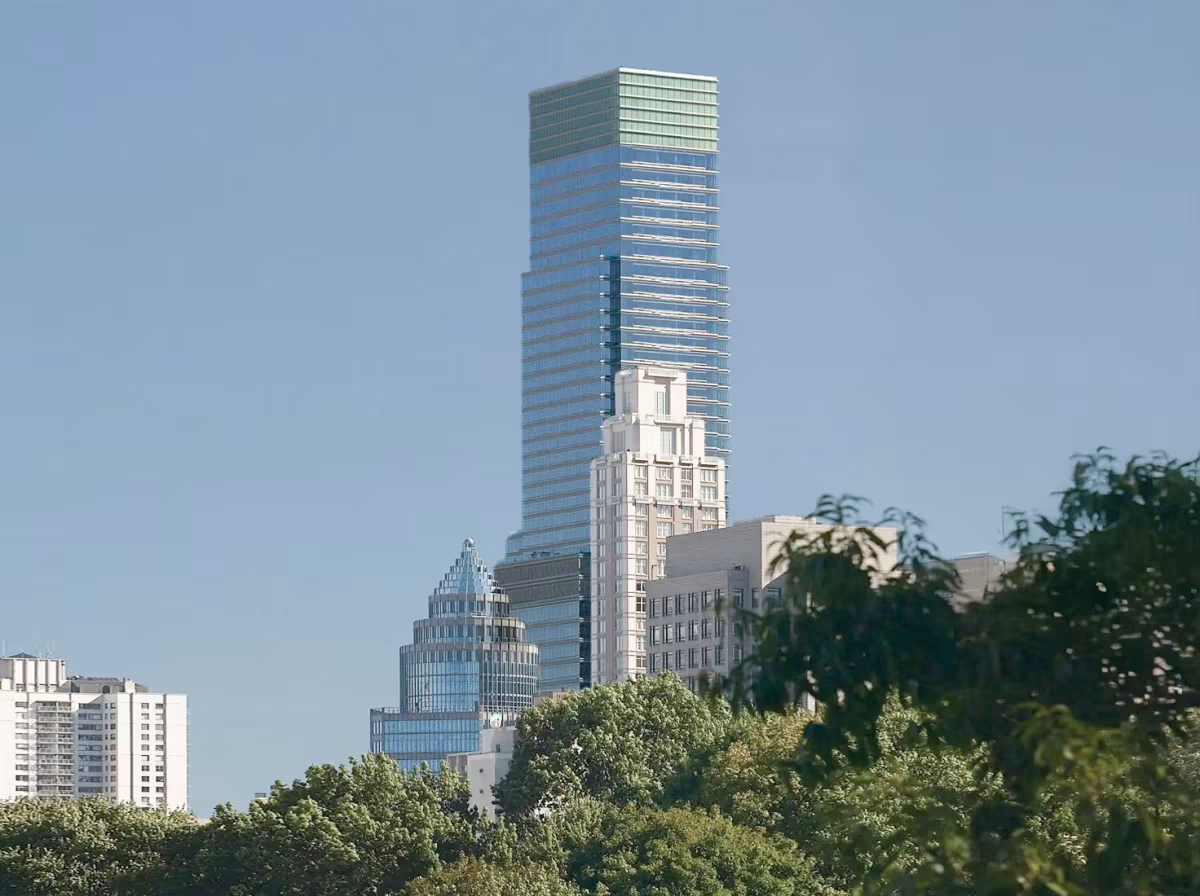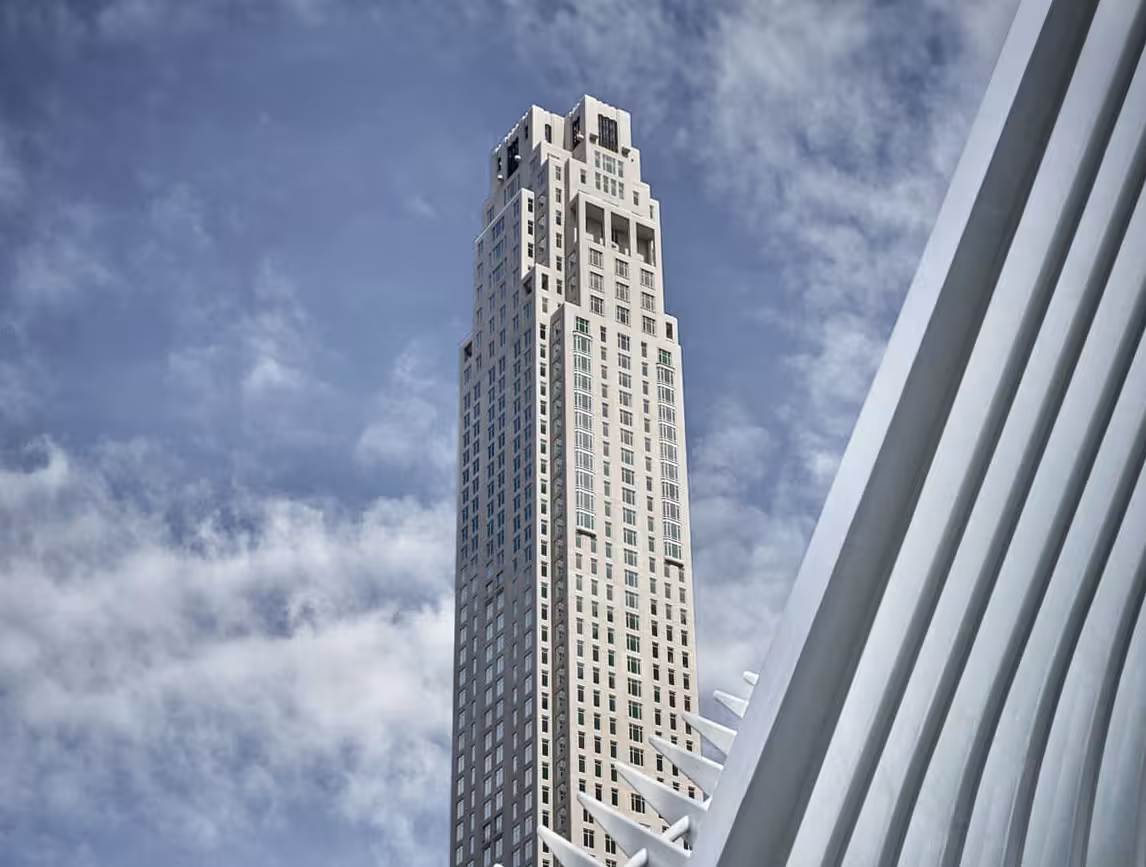731 Lexington Avenue Building vs Four Seasons New York Downtown


Comparing the 731 Lexington Avenue Building and the Four Seasons New York Downtown is interesting because they both rise in New York, NY, yet they were conceived by two different design teams, César Pelli & Associates and Robert A.M. Stern Architects, and were completed at different points in time. They were finished more than a decade apart.
This contrast within the same city allows us to see how different creative minds interpreted the evolving needs of New York across time.
Let's take a closer look!
Height & Size
The Four Seasons New York Downtown is clearly the larger tower of the two, both in terms of height and number of floors. It rises to 925ft (282m) with 82 floors above ground, while the 731 Lexington Avenue Building reaches 814ft (248m) with 54 floors above ground.
Of course, each project may have faced different briefs or regulatory constraints, which we don't really know about and could also explain the outcome.
Architectural Style
Both the 731 Lexington Avenue Building and the Four Seasons New York Downtown were designed in line with the aesthetic conventions of the Contemporary style.
At the time, this style was at the height of its popularity. So both César Pelli & Associates and Robert A.M. Stern Architects followed what was in many ways expected of them, producing designs that fit comfortably within contemporary architectural norms, rather than breaking with convention.
Uses
Both towers follow a mixed-use program. The 731 Lexington Avenue Building combines residential, retail and commercial, while the Four Seasons New York Downtown integrates residential and hotel. Notably, both include residential as part of their program.
The Four Seasons New York Downtown incorporates a 5-star hotel with 189 rooms. More information is available at the official website.
In terms of capacity, the 731 Lexington Avenue Building offers 105 apartments, while the Four Seasons New York Downtown provides 157 units.
Structure & Facade
Both towers share the same structural solution, a Frame system.
A frame structure uses a grid of columns and beams to carry the building's loads. This frees the walls from structural duties, allowing for flexible floor plans and larger windows.
However, when it comes to the facade, both buildings use different approaches. The 731 Lexington Avenue Building uses a Curtain Wall facade, while the Four Seasons New York Downtown uses a Modular facade.
A Curtain Wall facade like the one seen in the 731 Lexington Avenue Building uses a lightweight glass curtain wall hung from the structure, while a modular facade like the one seen in the Four Seasons New York Downtown employs prefabricated panels, often mixing solid surfaces with smaller windows.
| 731 Lexington Avenue Building | Four Seasons New York Downtown | |
|---|---|---|
| César Pelli & Associates | Architect | Robert A.M. Stern Architects |
| 1998 | Design Started | 2007 |
| 2001 | Design Ended | 2008 |
| 2001 | Construction Started | 2013 |
| 2005 | Year Completed | 2016 |
| Contemporary | Architectural Style | Contemporary |
| Mixed | Current Use | Mixed |
| 54 | Floors Above Ground | 82 |
| 3 | Floors Below Ground | 2 |
| 237 | Last Floor Height | 265 |
| 248 m | Height (m) | 282 m |
| 105 | Residential Units | 157 |
| Frame | Structure Type | Frame |
| Steel And Concrete | Vertical Structure Material | Concrete |
| Poured Concrete Over Metal Decking | Horizontal Structure Material | Concrete, Steel |
| No | Facade Structural? | No |
| Glass, Steel | Main Facade Material | Limestone, Concrete |
| Bovis Lend Lease Ltd. | Main Contractor | Tishman Construction |
| Vornado Realty Trust | Developer | Silverstein Properties |
| Flack + Kurz | MEP Engineer | WSP Flack + Kurtz |
| Thornton Tomasetti | Structural Engineer | WSP Cantor Seinuk |
| NY | State | NY |
| New York | City | New York |
| 731 Lexington Avenue | Address | 30 Park Place |